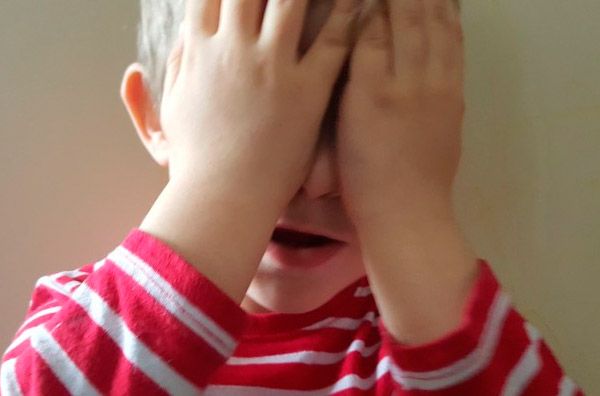WHO is concerned about high levels of violence against children
Last reviewed: 29.11.2021

All iLive content is medically reviewed or fact checked to ensure as much factual accuracy as possible.
We have strict sourcing guidelines and only link to reputable media sites, academic research institutions and, whenever possible, medically peer reviewed studies. Note that the numbers in parentheses ([1], [2], etc.) are clickable links to these studies.
If you feel that any of our content is inaccurate, out-of-date, or otherwise questionable, please select it and press Ctrl + Enter.
According to international research data, 1/4 of the adult population of the world was subjected to ill-treatment in childhood, in childhood, every 5 women and 13 men were sexually harassed. According to psychologists, cruelty to the child leads to the development of severe physical and mental health disorders, in addition, the consequences of a child's trauma can affect the social and professional life.
WHO experts believe that cruelty to children can and should be prevented and that in order to achieve the set goals, a multisectoral approach is needed, using effective programs it is possible to support parents and teach them the right methods of educating children who would not hurt the child's psyche.
Violence against children is considered neglect, physical and psychological violence (threats, punishment, etc.), neglect, inattention to the problems of their own children, exploitation of child labor for commercial purposes, etc., which ultimately threatens the mental and physical health, normal development and human dignity of the child. One of the forms of violence also includes sexual harassment by one of the parents, a relative or an outsider.
To date, child abuse is a global problem, but despite a variety of studies, there is a significant lack of data on this issue, as cruelty to children is a complex and difficult-to-learn problem. Existing estimates fluctuate in a fairly wide range and largely depend on the country and the research method by which the analysis was carried out.
According to expert groups, more than 30 thousand children under the age of 15 die every day in the world, but experts are sure that the scale of the tragedy is underestimated, since a significant number of deaths due to cruel treatment with children are attributed to unsuccessful falls, burns, accidental drownings etc. The problem of sexual and other types of violence against children and adolescents is especially acute in camps for refugees from zones of armed conflicts, where military, humanitarian workers and other members of the society feel defenseless children and their parents, as well as the impunity mock children.
Because of the appearance of cruelty on the part of adults, a child can get heavy stress, which will lead to disruption of the development of the brain, nervous, immune and other systems. People who have been exposed to some form of violence in childhood are more likely to develop depression, obesity, alcohol, drugs, and smoking. In addition, there is an increased risk that such people themselves will commit physical or sexual violence against others. All this contributes to the development of cardiovascular problems, cancer, increases the risk of suicide.
Experts have identified several risk factors that will help in general to provide the reasons for the violence against children. First of all, it should be noted that a child never acts as the initiator of cruel behavior with him, children are always victims. But some personal qualities of the child (character, excessive emotionality, etc.) can increase the risk of cruelty on the part of the adult, for example, most often from such an attitude on the part of adults, young children under the age of 4 and adolescents, as well as children who do not justified the wishes of the parents or were unwanted in the family, children with physical disabilities.
Adults, on their part, expose the child to inattention, harmful habits (smoking, drinking alcohol, drugs), involvement in criminal activities. Often children suffer from cruel treatment because of financial problems of parents, strife within the family (between parents), differences in sexual, social and other characteristics.

WHO recommends that various programs be used to prevent new cases of child abuse, which help young parents get used to a new role for them, in particular to visit homes where newborns have appeared as nurses who must support, educate and provide all the necessary information about the upbringing and development of the child .
Also conduct training seminars for mothers and fathers to improve their parenting skills, expand knowledge about the development of the child and instill in them the skills of positive parenting.
Before the newborn is discharged from the hospital, young parents should be informed of possible head injuries due to cruel treatment, for example, the so-called shaken baby syndrome.
To prevent sexual harassment of children, it is necessary to work with children in schools and explain to the child that his body is only his property and no one has the right to touch him without his consent, the child also needs to know the differences between good, for example, and bad touches (to intimate parts of the body). It is important to teach children to recognize the threat from the adult, to be able to say a solid "no", and to tell the situation to an adult who is trustworthy, not only close relatives, but also outsiders, who are able to help, for example, a teacher.
For its part, WHO provides technical and normative instructions to prevent child abuse, encourages countries to strengthen measures to prevent new incidents of violence, provide protection and support to children and families who have suffered from some form of violence.
